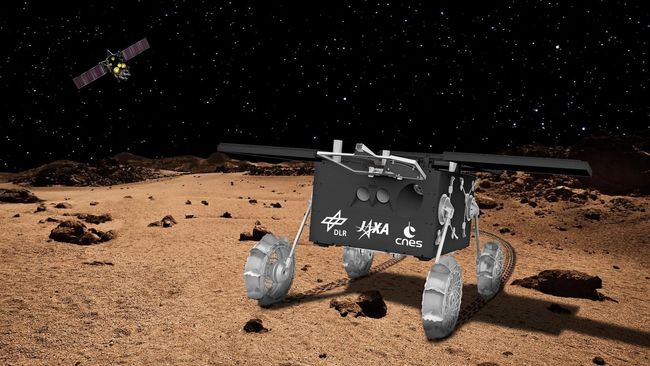The objective of the mission is to collect samples from Phobos and find out the origin of the Martian satellites
The European Mars rover IDEFIX, developed jointly by the German Aerospace Center (DLR) and the French space agency Center National d'Etudes Spatiales (CNES), has arrived in Japan in preparation for the MMX Mars satellite exploration mission. The mission, carried out by the Japan Aerospace Exploration Agency (JAXA), aims to collect samples from the surface of the moon Phobos.
The mass of the autonomous Mars rover IDEFIX is 25 kilograms. He was named after the white dog from the Asterix comics.
The main MMX spacecraft, due to launch in 2026, will have to collect 10 grams of material from Phobos. These samples will then be returned to Earth by 2031. IDEFIX will first land on Phobos, collect useful information and assist the main spacecraft in completing its mission. In preparation for the main mission, the rover will analyze the composition and texture of the surface of Phobos in certain regions under conditions close to weightlessness. All operations, including ascent after landing on Phobos, will be performed autonomously. CNES IDEFIX project manager Stefan Mary notes that the biggest challenge for rover engineers will be performing many operations without commands from Earth.
Problem MMX — studying the origin of Phobos and another Martian satellite, Deimos. Scientists want to determine whether these satellites are captured asteroids or whether they were formed as a result of the merger of fragments thrown into orbit due to an astroid impact on Mars.
The MMX mission was originally scheduled to launch in 2021, but doubts about the readiness of Japan's new H3 rocket led JAXA to decide to delay the mission until the next Mars launch window in 2026. It first reached Earth orbit in 2023 after a previous launch failure. Under the new schedule, the mission will launch on an H3 rocket from Tanegashima Space Center in 2026 and arrive in Mars orbit in 2027. Next, mapping and analysis of the satellites of Deimos and Phobos will begin. The IDEFIX rover and the main MMX spacecraft are expected to land on the surface of Phobos in 2029, ushering in a new era of exploration of Mars and its moons.

